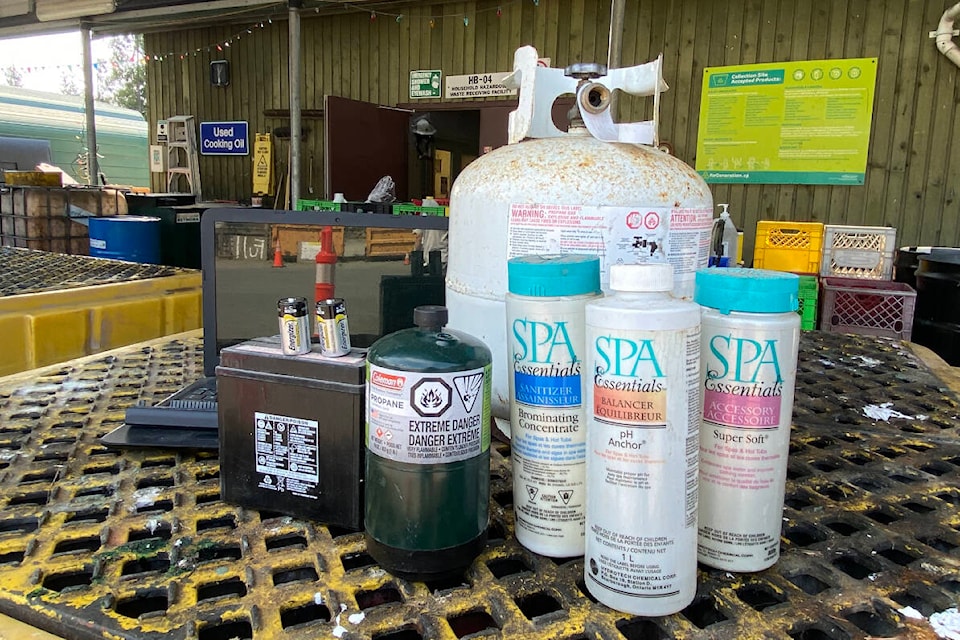What do barbecuing, e-biking, relaxing by the pool and gardening all have in common, besides being fun summer activities? Key parts of these activities contain household hazardous waste – or HHW – things like batteries, paints, cleaners, motor oil, gasoline, pool chemicals, propane cylinders, pesticides, fertilizers and more that can be found in every home in the capital region.
What makes these things potentially hazardous?
Barbecuing uses propane tanks or canisters that can potentially explode if compacted in a garbage or recycling truck. E-bikes contain large lithium-ion batteries that when not disposed of properly can spark landfill fires. Pool chemicals include hydrochloric acid, a highly reactive chemical that can cause fires and chemical reactions if not handled properly.
So now you know the ‘why,’ it’s time to consider the ‘how.’
Here are five ways to rethink what you put in your household garbage and recycling bins, and help keep workers, facilities and the environment safe from household hazardous waste:
- Identify problem materials – HHW is any waste from your home that you consider to be dangerous or that you’re unsure about. This can include any leftover household product that is marked flammable, corrosive, explosive or poison. Common examples are pesticides, varnishes, paints, cleaners and batteries.
- Find a location to recycle or dispose of HHW safely – HHW can be safely disposed of at the Hartland Depot for free, or you can search for the item on myrecyclopedia.ca to find a list of alternate drop-off locations. Review HHW Products materials accepted at the Hartland Depot here.
- Package and label materials properly – Keep HHW in its original container. If the original container is damaged or leaking, place the whole damaged container and product in a second container (of similar material) and transport together. If there’s no original packaging and you know what the HHW product is, clearly label the container. If you don’t know what type of HHW you have, you can still bring it to the Hartland Depot, but you must drop it off on the yellow table and speak with a staff member before you leave. NEVER mix HHW products together.
- Transport with care – When transporting HHW, ensure it’s in an upright position in the trunk of a car or bed of a truck. If travelling from a Gulf Island, review BC Ferries’ procedure on transporting dangerous goods.
- Take action and change your behaviour – Do not put hazardous materials in your recycling bins, your garbage cans, or down the drain/toilet. If you can, try and avoid using HHW products from the start. For example, many environmentally friendly cleaning products exist, or you can try making your own using recipes in the Clean Green Cookbook.
To learn more about HHW visit www.crd.bc.ca/hhw.
